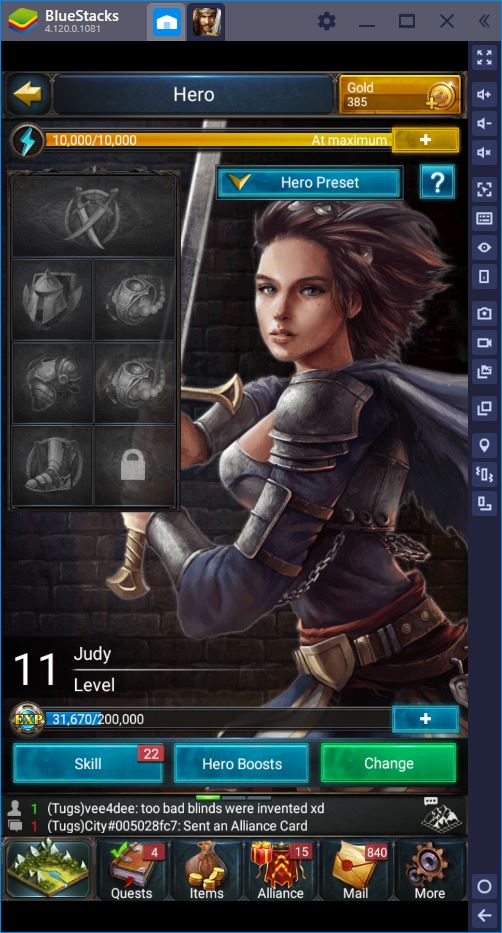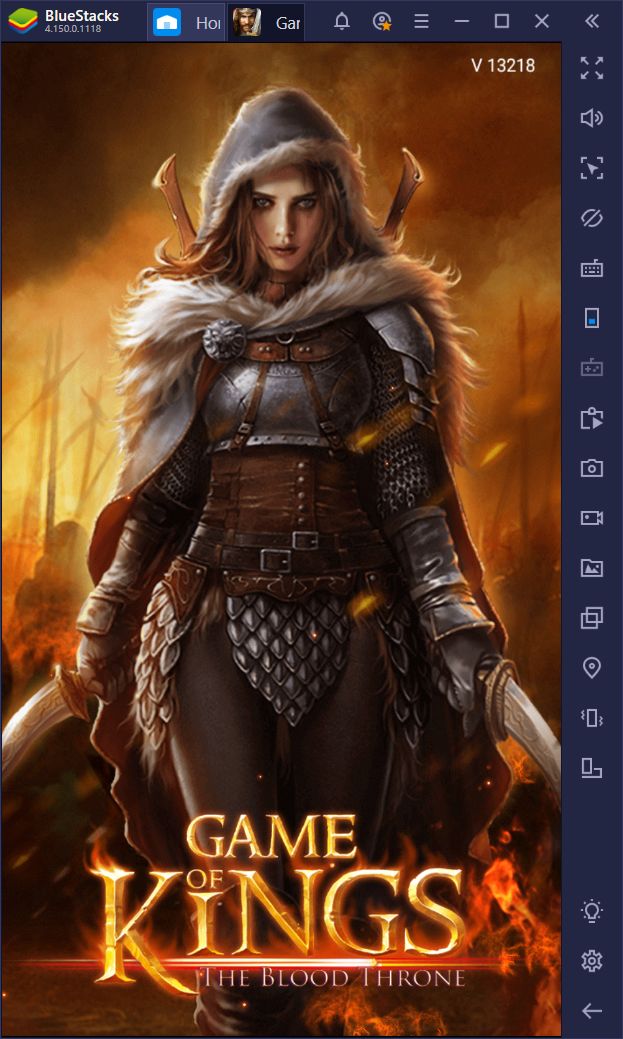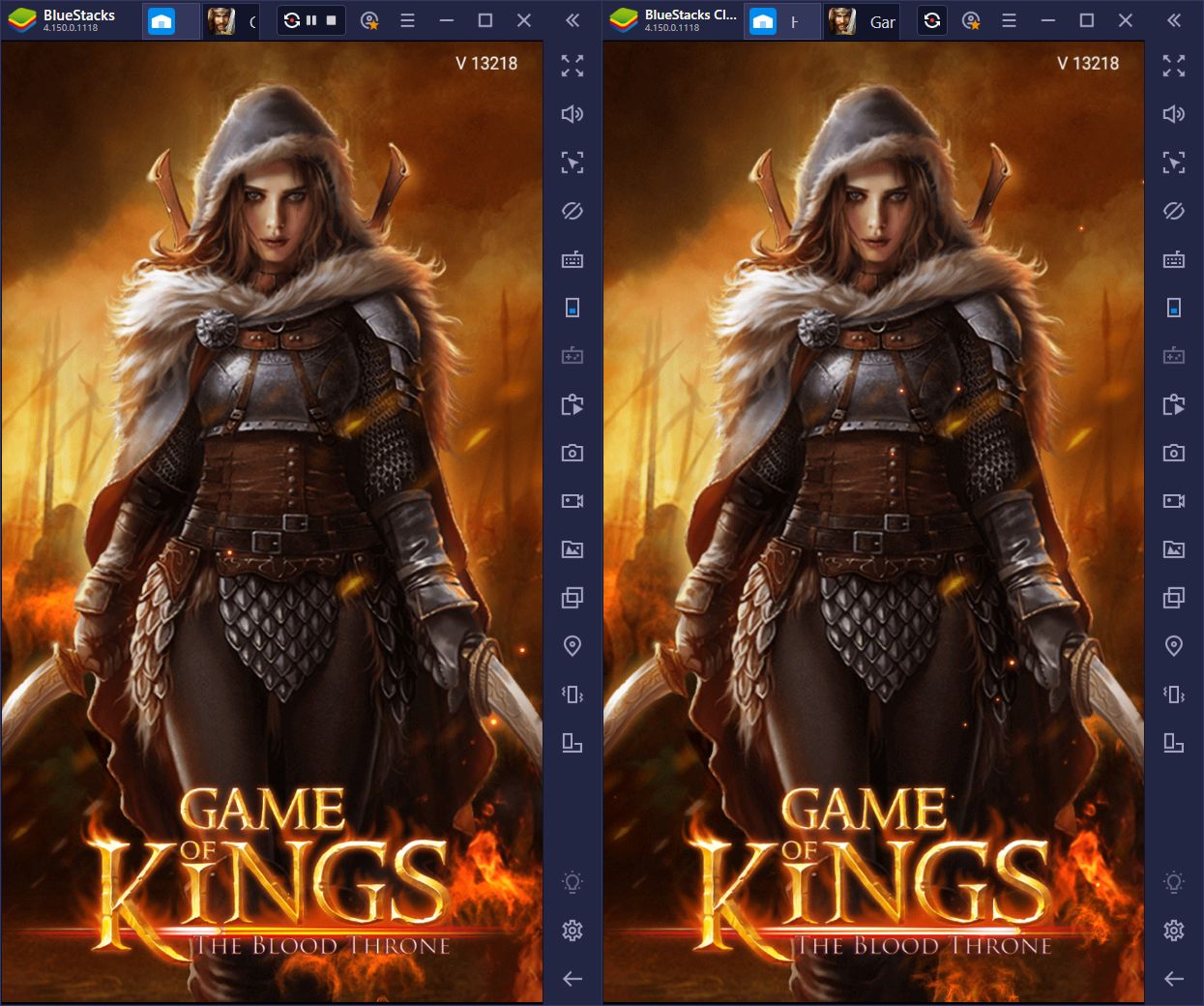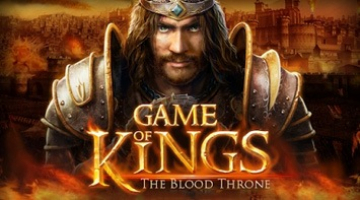Game of Kings: The Blood Throne on PC – A Complete Guide to Combat and Troops
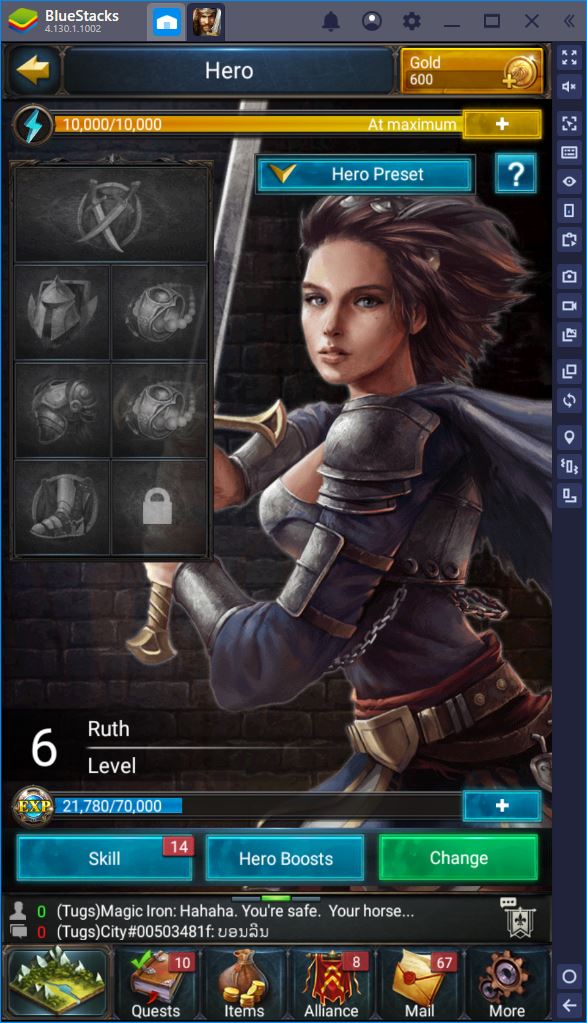
Game of Kings fits neatly into the mobile base-building genre, but the release is subtitled “The Blood Throne” for a good reason. Even if you start out as a peaceful king, there comes a time in the development of your kingdom when you have to start raiding others in order to keep up with ever-growing resource demands. In essence, you build your throne by spilling the “blood” of others, which makes combat just as important as building.
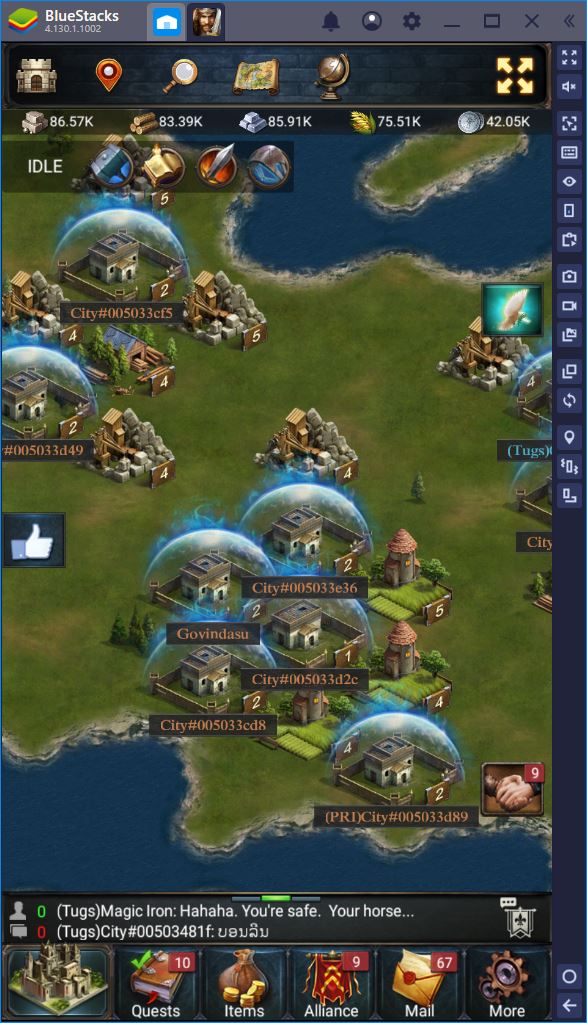
In fact, these two aspects of the game are closely interwoven. Try as hard as you may, you can’t have one without the other. We’ve already discussed base-building at length in a different guide, so it’s time to take a good look at troop types, army compositions, and bloody battle.
Kingdoms, Monsters, and Dragons
There are actually several ways to do battle in Game of Kings. For instance, you can use your hero, Ruth – in our case, to attack and defeat all manners of monsters across the global map. This type of combat does not involve your army, but relies on your hero research, skills, and gear instead.

The aim is to hit a monster as many times as possible before delivering the killing blow, which tends to award more XP and resources than simply one-shotting it. Monsters come in different shapes and levels and, if you’re patient enough, you might even encounter a dragon or two!
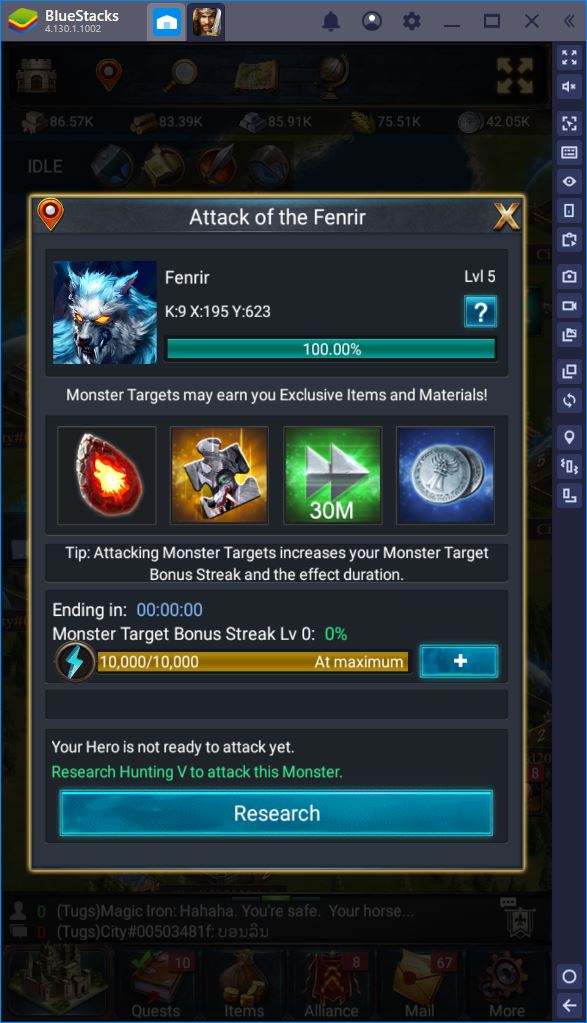
Meanwhile, raiding another player’s kingdom is an entirely different kettle of fish. This requires you to send an army to their location, where your troops attempt to defeat the defending units and the enemy wall. You can coordinate an attack with one or several alliance members, but bear in mind that your opponent can also request help from others.
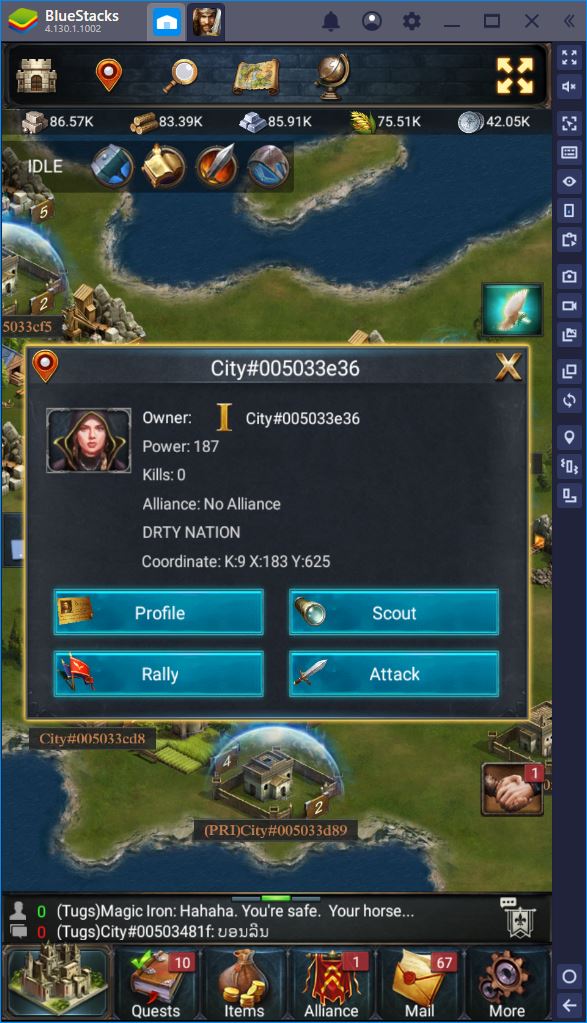
We’ll talk about the different types of troops you can use during raids in a moment. For now, it’s important to understand how combat is resolved in Game of Kings. As with other base-building games, troops come in different tiers. When two armies clash, they deal damage to one another based on the number, type, and level of troops. This damage is distributed to the lowest tier troops first and then carries over progressively to higher tiers. It’s essential to keep this detail in mind when you plan your attacks, because this is the one reason why it makes sense to continue to use tier I or tier II troops (to absorb damage) even during the late-game.
Troop Types and Army Configurations
There are four basic types of troops in Game of Kings – infantry, archers, cavalry, and siege engines, each with their own strengths and weaknesses. All tiers of infantry, for example, are strong against cavalry and siege, but weak against archers and traps. Archers, on the other hand, are great against infantry and siege, but weak against cavalry and traps. Cavalry performs well against archers and siege, but poorly against infantry and traps, whereas siege engines are weak against pretty much everything apart from defensive traps.
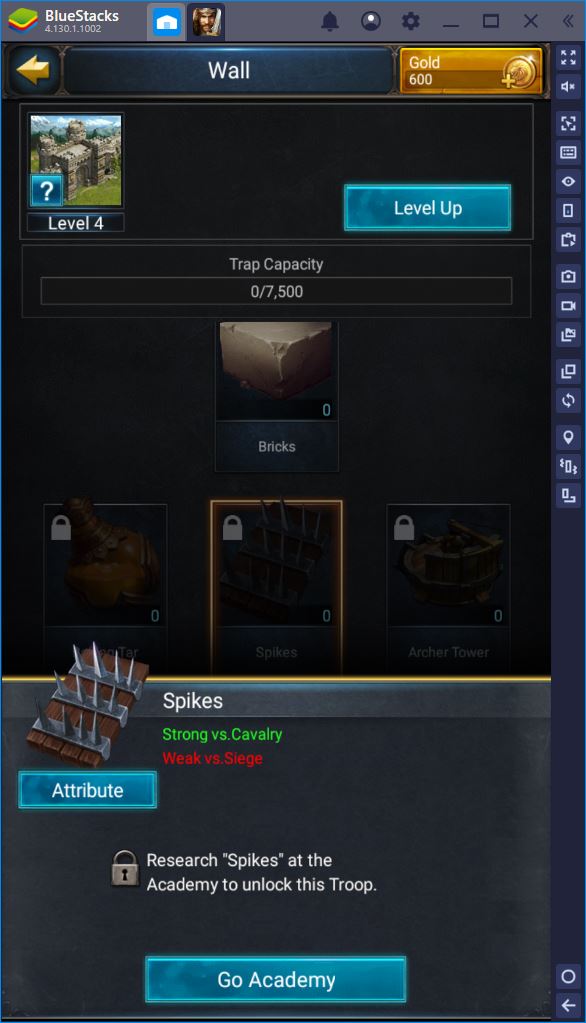
The only way to attack another player is to attack their base, which means that your army goes up against defending troops and any traps they may have built into the wall. If you’ve played classic base-building war games such as Final Fantasy XV: A New Empire, you already know that there are a few ways to go about this, depending on what you hope to achieve.
Play Game of Kings on BlueStacks
If, for instance, you want to inflict maximum damage and training new high-tier troops is not a problem for you, you can send an army made up of highest tier units only. To obtain the best results, you should decide on the type of unit you use based on the composition of the enemy’s defending army. If their defense is predominantly made up of archers, then you might want to send in your best cavalry.
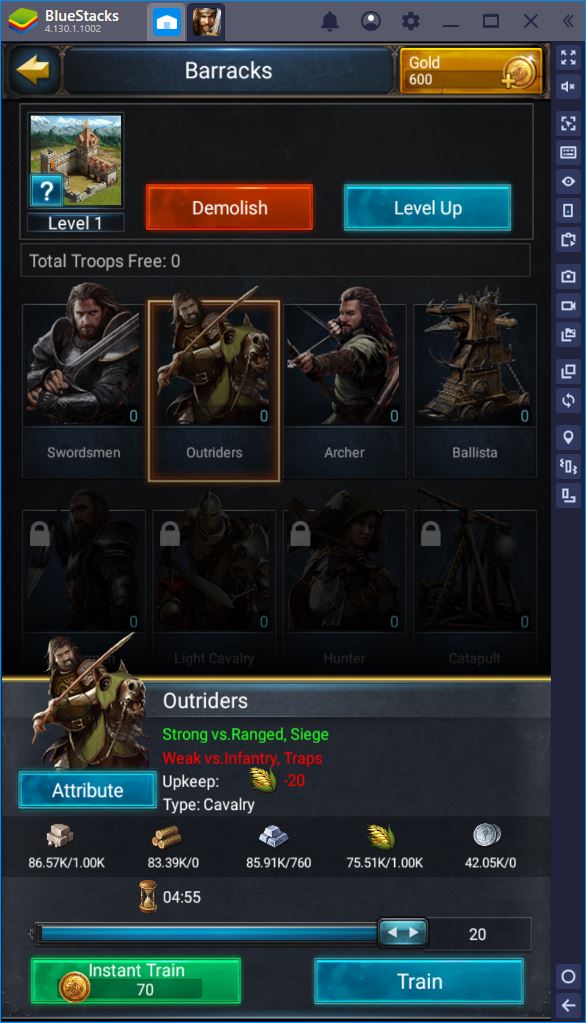
This method, however, can be costly, because the entire damage summed up by the defending army will be shouldered by your high tier (expensive) troops. A slightly more balanced approach is to stratify your army into two tiers. For example, let’s say that you’re using cavalry during a siege. A little over half of your army can consist of low-tier Outriders, while the remaining half can be Light or Companion Cavalry. Naturally, this configuration inflicts less damage, but it also protects your highest tier units so that you don’t have to go through the lengthy and costly process of re-training them.
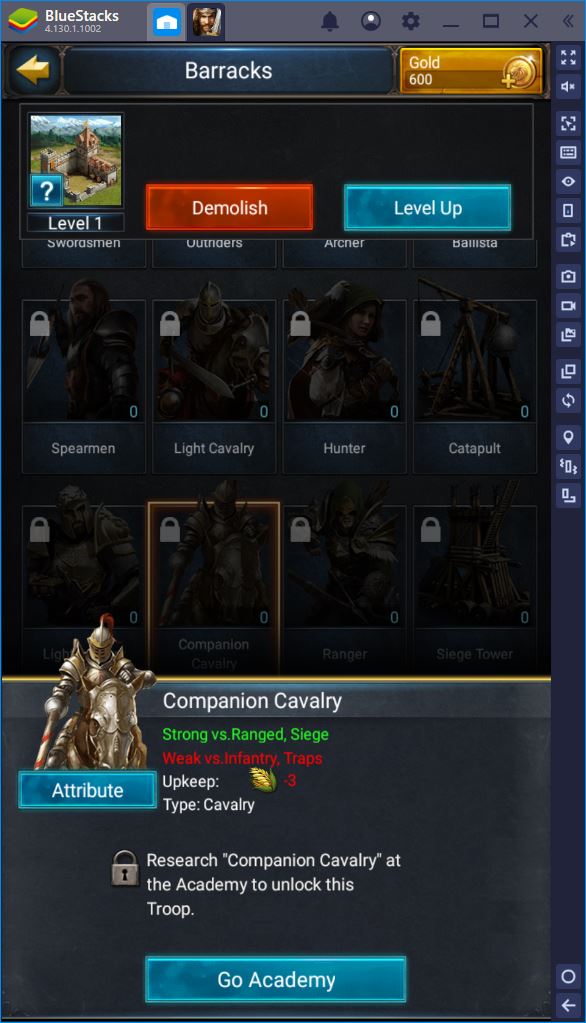
Troop compositions can differ from one opponent to the next. To give you another example, some players prefer to use a defending army that includes equal numbers of infantry, archers, and cavalry. In this situation, you might obtain better results by sending in an equally balanced army, featuring both tier I and tier II troops of all types. As a general rule, you should always perform “mock” attacks before sending in your full army. Pick a certain composition and apply it in very small numbers. Depending on the result, adjust your army before the full-blown raid.
The Academy and Better Troops
As you develop your kingdom, the Academy quickly becomes the most important (and costly) building. This is where you can research technologies that benefit your hero, your entire kingdom, and your troops. To discover higher tier troops, for example, you have to advance down the Combat branch, which most players do as a matter of priority.
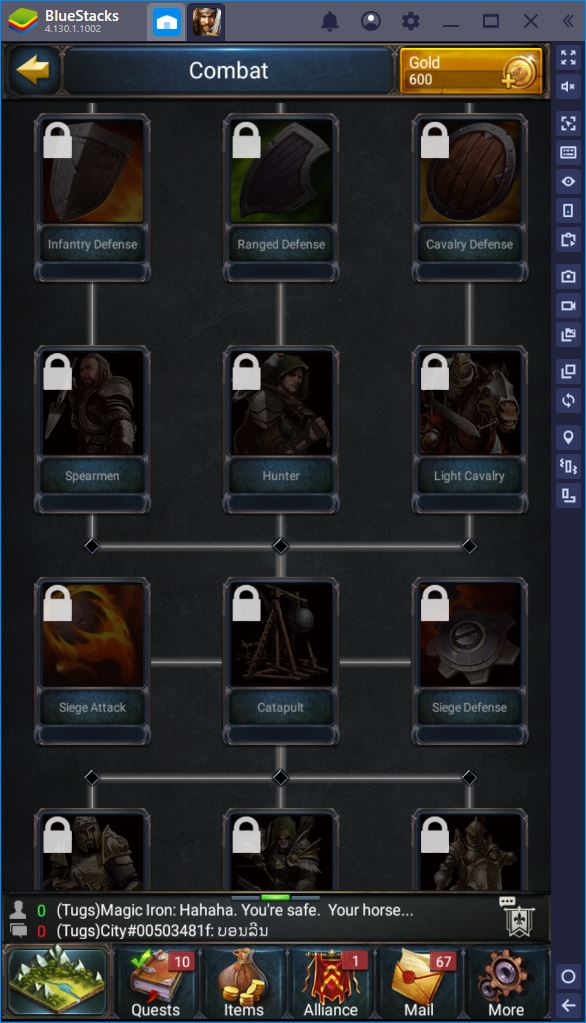
Unfortunately, new technologies become increasingly expensive as you unlock them. While Tier II troops are fairly easy to research, anything above that can cost a fortune in both resources and time. Nevertheless, this is the only way to become stronger in Game of Kings.
Luckily, if you’re playing the game on BlueStacks, you can use the Multi-Instance Manager to set up multiple farm accounts and drastically increase your resource production. At least until research costs begin to exceed what you can store in your base at any give point, this nifty tool will help you get ahead of your neighbors and plan more successful attacks.
All in all, combat in Game of Kings is all about experimentation. It’s never a good idea to send your entire army in one raid without first testing the waters. How is your opponent going to react? Does he have empire shields at his disposal? Does your army composition inflict maximum damage to their defenses? You can learn all of this and more just by sending in a “mock” attack. Just make sure you’re settled on attacking someone before you start threatening them in this manner. It can be difficult to take it back!


